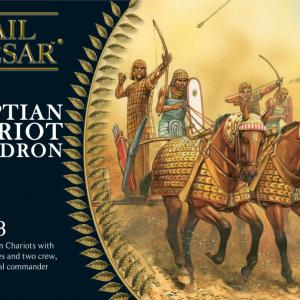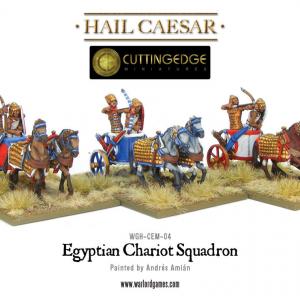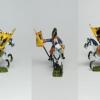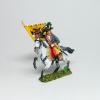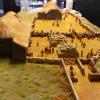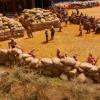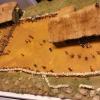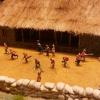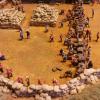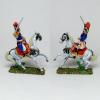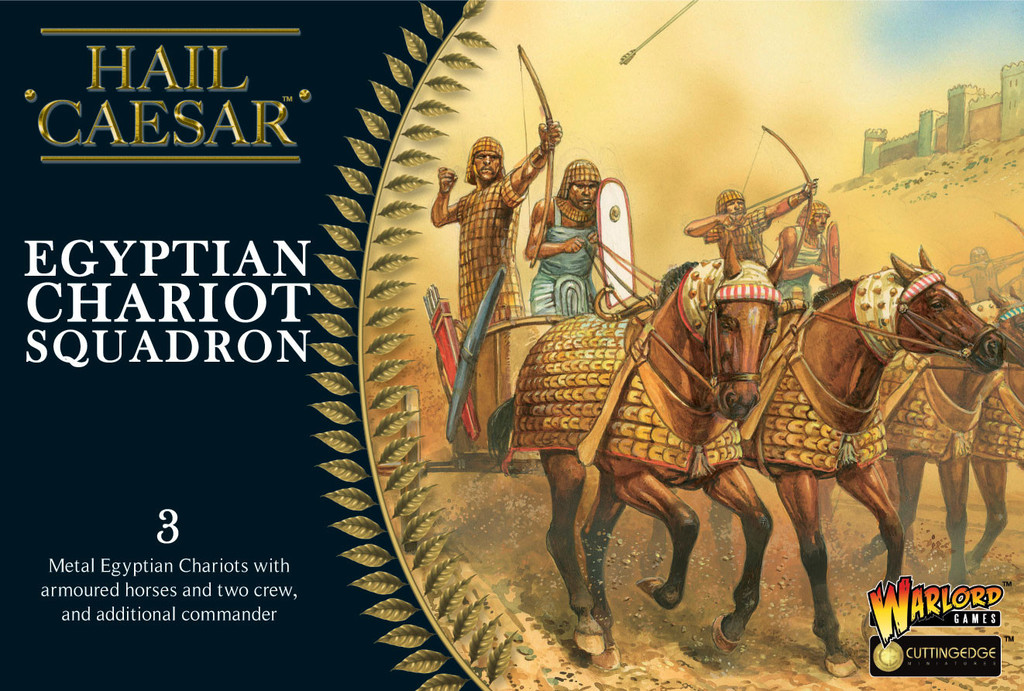
Egyptian Chariot Squadron
En raison de la situation actuelle, les ventes sont temporairement suspendues. Toutes les commandes en cours seront honorées dans les meilleurs délais possibles.
WGH-CEM-04-Egyptian-Chariot-Squadron
WGH-CEM-04-Egyptian-Chariot-Squadron
A l’avant des armées du Pharaon se trouvaient les plus puissantes armes d’un âge nouveau : les chars de guerre ! Les chars égyptiens étaient de fabrication légère, avec un équipage composé d’un conducteur et d’un guerrier armé d’un arc et de plusieurs javelots courts, qui pouvaient être lancés ou utilisés pour poignarder l’adversaire. Construire des chars était coûteux, et ils étaient fréquemment décorés de façon élaborée ou dorés à l’or fin. Après une bataille, les chars étaient listés parmi les butins de guerre. Durant le Nouvel Empire, la Syrie devint le champ de bataille des empires de cette époque. Thoutmosis III (1479-1425 av. J.-C.) fit campagne contre les cités de Canaan et de Syrie, et ces nombreuses conquêtes lui ont valu le titre de « Napoléon de l’Ancienne Égypte ». Lors de la bataille de Megiddo il affronta une coalition de Cananéens conduits par le Roi de Kadesh, remportant ainsi la plus grande victoire de son règne.
The Eighteenth, Nineteenth and Twentieth dynasties comprise the age of the Egyptian New Kingdom (1550-1077BC). During these years a succession of warrior pharaohs led Egyptian forces in wars of conquest, southwards to Nubia and northwards to Canaan, Amurru and Syria. At the forefront of the pharaohs’ armies were the most powerful weapons of the new age – chariots!
Egyptian chariots were lightly built, and were crewed by a driver and a fighter armed with a bow and a number of short spears, which could be thrown or used to stab at the enemy. Chariots were expensive to make, and were often elaborately decorated or gilded. After a battle, captured chariots were listed amongst the spoils of war.
During the New Kingdom Syria became a battleground for the empires of the age. Thuthmosis III (ruled 1479-1425 BC) campaigned against the cities of Canaan and Syria, and his many conquests have earned him the title of ‘Napoleon of Ancient Egypt’. At the Battle of Megiddo he fought against a coalition of Canaanites led by the King of Kadesh, winning the greatest victory of his reign. Afterwards the Hittites, Babylonians and Assyrians all acknowledged the pharaoh’s might with tributary gifts – only the Mitanni failed to do so – and Thuthmosis took his revenge by leading a campaign across the Euphrates and wreaking devastation upon the Mitannian King’s cities!
Boxed set containing three metal Chariots
Disponibilité : Délai d'approvisionnement 3 semaines minimum
41.6€ TTC
WGH-CEM-04-Egyptian-Chariot-Squadron
A l’avant des armées du Pharaon se trouvaient les plus puissantes armes d’un âge nouveau : les chars de guerre ! Les chars égyptiens étaient de fabrication légère, avec un équipage composé d’un conducteur et d’un guerrier armé d’un arc et de plusieurs javelots courts, qui pouvaient être lancés ou utilisés pour poignarder l’adversaire. Construire des chars était coûteux, et ils étaient fréquemment décorés de façon élaborée ou dorés à l’or fin. Après une bataille, les chars étaient listés parmi les butins de guerre. Durant le Nouvel Empire, la Syrie devint le champ de bataille des empires de cette époque. Thoutmosis III (1479-1425 av. J.-C.) fit campagne contre les cités de Canaan et de Syrie, et ces nombreuses conquêtes lui ont valu le titre de « Napoléon de l’Ancienne Égypte ». Lors de la bataille de Megiddo il affronta une coalition de Cananéens conduits par le Roi de Kadesh, remportant ainsi la plus grande victoire de son règne.
The Eighteenth, Nineteenth and Twentieth dynasties comprise the age of the Egyptian New Kingdom (1550-1077BC). During these years a succession of warrior pharaohs led Egyptian forces in wars of conquest, southwards to Nubia and northwards to Canaan, Amurru and Syria. At the forefront of the pharaohs’ armies were the most powerful weapons of the new age – chariots!
Egyptian chariots were lightly built, and were crewed by a driver and a fighter armed with a bow and a number of short spears, which could be thrown or used to stab at the enemy. Chariots were expensive to make, and were often elaborately decorated or gilded. After a battle, captured chariots were listed amongst the spoils of war.
During the New Kingdom Syria became a battleground for the empires of the age. Thuthmosis III (ruled 1479-1425 BC) campaigned against the cities of Canaan and Syria, and his many conquests have earned him the title of ‘Napoleon of Ancient Egypt’. At the Battle of Megiddo he fought against a coalition of Canaanites led by the King of Kadesh, winning the greatest victory of his reign. Afterwards the Hittites, Babylonians and Assyrians all acknowledged the pharaoh’s might with tributary gifts – only the Mitanni failed to do so – and Thuthmosis took his revenge by leading a campaign across the Euphrates and wreaking devastation upon the Mitannian King’s cities!
Boxed set containing three metal Chariots
Fabricant : Warlord Games








